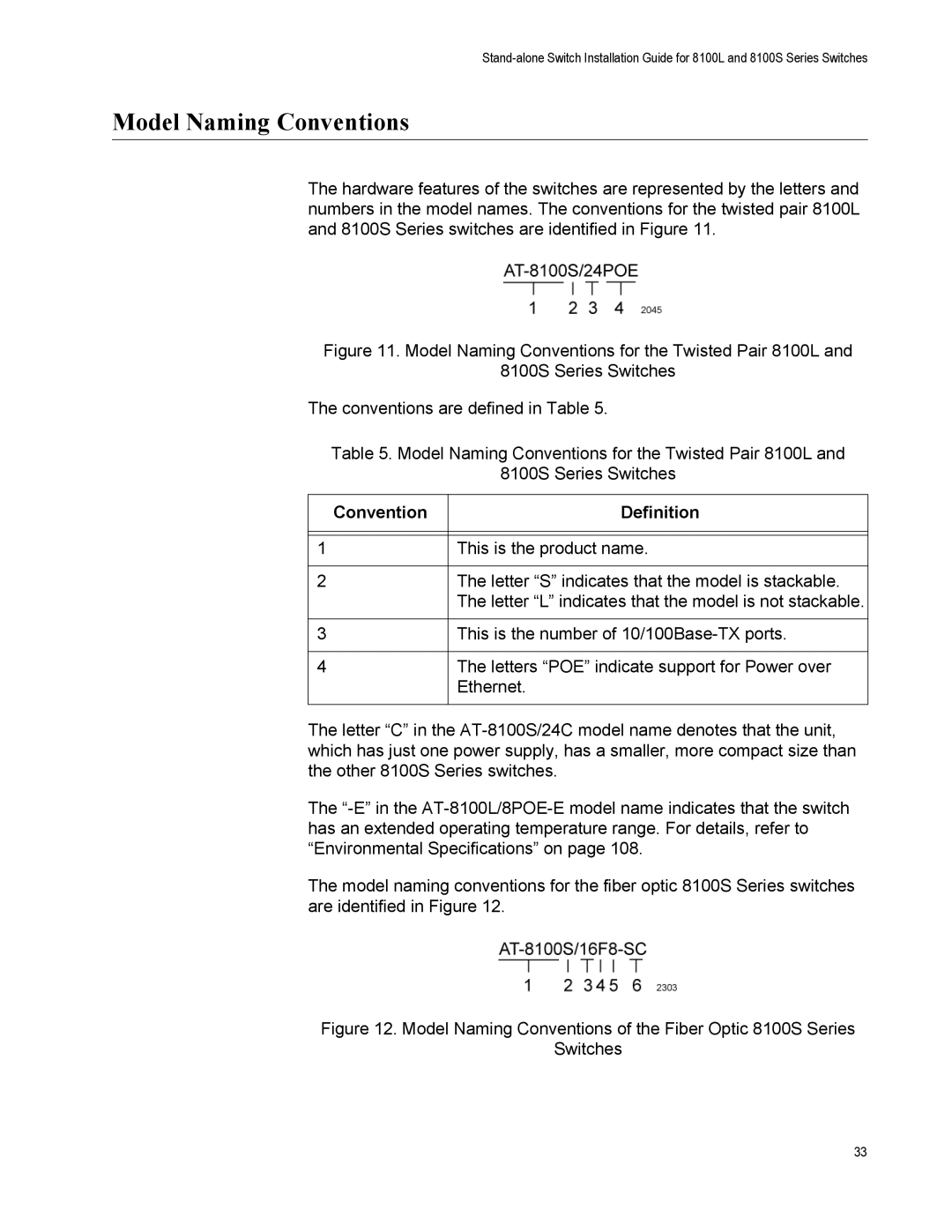AT-8100S/48POE, AT-8100S/48, AT-8100L/8, AT-8100L/8POE-E, AT-8100L/8POE specifications
Allied Telesis is renowned for its range of high-performance networking solutions, and the AT-8100 series exemplifies their commitment to innovation in the network switch market. Designed for small to medium-sized businesses, the AT-8100L and AT-8100S series includes several versatile models: AT-8100L/8POE, AT-8100L/8POE-E, AT-8100L/8, AT-8100S/48, and AT-8100S/48POE. These products combine advanced features with user-friendly management tools, making them ideal for various applications.One of the standout features of the AT-8100 series is its Power over Ethernet (PoE) capabilities, particularly in models like the AT-8100L/8POE and AT-8100S/48POE. These switches can deliver power to connected devices, such as IP cameras, wireless access points, and VoIP phones, over the same cabling that carries data. This simplifies installations and can reduce infrastructure costs, as there’s no need for additional power sources for each device.
The AT-8100L/8POE and AT-8100L/8POE-E are equipped with 8 Ethernet ports, with the PoE models supporting up to 15.4W per port on the standard. The AT-8100S/48 boasts an impressive 48 ports, making it suitable for high-density environments. All units in the series are designed to handle Layer 2 networking protocols, ensuring reliable and swift data transfer within local area networks.
Management features are robust and user-friendly. The switches support both web-based and command-line interface management, allowing network administrators to tailor their control methods according to preference and familiarity. The AT-8100 series includes features such as VLAN support, quality of service (QoS) settings for traffic prioritization, and link aggregation for increased bandwidth and redundancy.
Security is a critical aspect of modern networking, and Allied Telesis addresses this with features like port security and DHCP snooping. These functionalities help prevent unauthorized access and protect the network from various types of attacks.
In summary, the Allied Telesis AT-8100 series switches, including the AT-8100L/8POE, AT-8100L/8POE-E, AT-8100L/8, AT-8100S/48, and AT-8100S/48POE, provide a blend of PoE capabilities, robust management features, and solid performance. Their reliability and ease of use make them an excellent choice for businesses looking to enhance their network infrastructure. As organizations increasingly rely on connected devices, the AT-8100 series equips them with the necessary tools to build efficient and secure networks.

